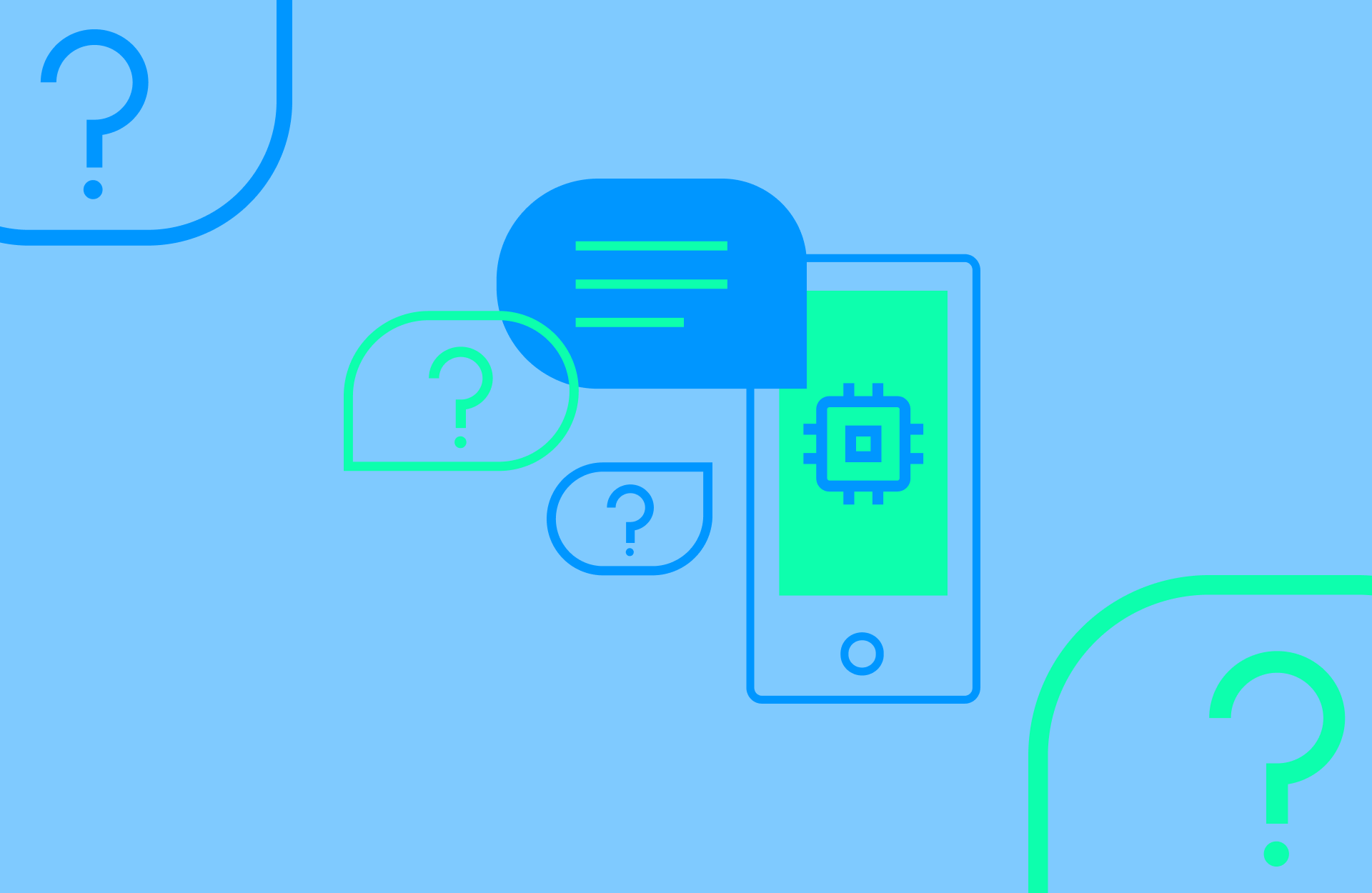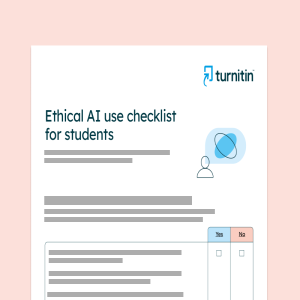In this blog post, we’re going to address frequently asked questions about AI writing tool misuse for students. In part one, we discussed ways to make sure you are using AI writing tools properly; we discussed the definition of academic integrity, how AI writing tool use and academic integrity are linked, and some examples of proper AI writing tool use.
We started off with the positive aspects of AI writing tool use, because there are ways to use AI with integrity. And because The International Day of Action for Academic Integrity is about upholding academic integrity in positive ways, that’s what we want to stress most.
But of course, there is always the fear of AI writing tool misuse. So we have to talk about AI writing tool misuse as well. Specifically, what does AI writing tool misuse look like? How can you self-check to make sure you’re using AI writing tools properly? We’ll discuss those points, and also offer up a student FAQ on AI writing tool misuse.
How can you avoid AI writing tool misuse?
Frankly speaking, no students want to engage in AI writing misuse. The first choice for everyone would be that learning is fun, the assignments are engaging, and thus there would be no need to cheat.
What does AI writing tool misuse look like?
Misuse of generative AI violates the tenets of academic integrity. When you take shortcut solutions to avoid reading and writing by using AI tools, that’s a form of misuse. And when you use generative AI and represent it as your own work (without citation or reference), that too is a form of misuse.
It’s important to not become dependent on AI writing tools, because AI can often be factually wrong or biased. When you don’t double check generative AI output, and submit incorrect work, then you also put yourself at risk. According to EdWeek, students chimed in on AI writing tools and found them to be unreliable, very biased, neither good nor bad, a source of inspiration, and in general, something that “can’t match up to humans” (Ferlazzo, 2023).
AI writing tool misuse isn’t worth the consequences of getting disciplined or missing out on learning.
Questions to help you self-check AI writing misuse
One way to make sure you’re using AI writing tools properly is to double check against the definition of academic integrity as stated earlier in a previous post about proper AI writing tool use. But you can also ask yourself the following questions on a regular basis:
- Why am I using generative AI?
- Am I using AI to help me think, or to think for me?
- Will using AI repress or express my authentic self?
- Will this elevate or diminish my learning?
- Am I using AI to produce content and pass it off as my own original work?
- If I use AI for research, am I accurately citing the primary sources? (Latrobe University, 2023; Stockman, 2023).
The above questions are a starting point for your relationship with AI writing tool use. It’s up to you to enact the values of academic integrity (honesty, trust, fairness, respect, responsibility, and courage) as you navigate your use of generative AI.
FAQs on using AI writing tools in student work
In case the above doesn’t answer your questions about proper AI writing tool use, we’ve collected some frequently asked questions below.
Will I get caught for using AI?
If you’re using AI properly and following your school’s AI policy and code of conduct, there is no issue with “getting caught using AI.” That said, if you are improperly using AI, there are multiple ways you could get caught.
First, generative AI is often unreliable; it can produce facts that are made up or wrong. According to The New York Times, “...It’s easy to get caught cheating with generative A.I. because it is prone to making stuff up, a phenomena [sic] known as ‘hallucinating’” (Metz, 2023; Chen, 2023). AI generated text may be challenging to detect, but here’s the thing: your teachers are experts in their subject. They’ll be the first to pick up on factual errors, or missing citations, and if they’ve seen your writing before, they know when your writing sounds like it isn’t your own voice.
Second, generative AI may not cite its own sources (or worse, it makes up its sources); as a result, AI writing tools can plagiarize material. When you pass off generative AI that contains plagiarism as your own work, then your work will be flagged.
Finally, AI writing detection tools exist, and are rapidly improving. It’s more important than ever to disclose the use of generative AI in any part of your work, whether it was to generate a first draft or to help with structuring your thinking. By citing AI, you provide transparency into your work.
Will I get in trouble for using AI writing tools?
Hopefully, you have your teacher’s permission to use AI writing tools before you use ChatGPT or other generative AI. In that case, you wouldn’t be violating policy for using AI writing tools. But it may be worth checking in with your teacher to be sure.
If you don’t disclose your use of AI writing tools or your school bans the use of AI in its entirety, then you may be subject to discipline. Your school should have a code of conduct or honor code that spells out how and when to use AI and any consequences for misconduct. Hopefully, too, one of the steps involved is a discussion with your instructor, giving you an opportunity to provide insights into your work.
Also, AI is not reliable and it’s very biased. If you submit something that AI has written without double checking the facts, your work could be full of errors. In fact, The New York Times wrote an article about using AI to write college application essays, and some of the work produced by generative AI contained inaccurate facts and information.
So in that sense, you may leave yourself open to misconduct allegations for using AI writing tools, because your work would be inaccurate.
Is using AI considered cheating?
If you have your teacher’s permission to use AI and you’ve disclosed your use of AI (in citation or a written acknowledgement), then you aren’t passing off generative AI as your own original work and you aren’t cheating.
However, if you’ve violated the tenets of academic integrity and/or are representing the work of AI as your own, then you may be engaging in academic misconduct, otherwise known as cheating. Without attribution, AI writing tool use is a form of academic misconduct. Passing off work completed by AI as your own original work is something that could get you in trouble; depending on your school’s honor code and policies, this could merit an investigation, a failing grade, or a conversation with your instructor or dean.
Conclusion: What you need to know about AI writing tool misuse as students
No one wants to engage in AI misuse, especially when the stakes are so high. AI writing tool misuse makes it so you miss out on steps in learning. Additionally, AI writing tool misuse can lead you to misconduct allegations and potential disciplinary action.
Because students are the most important part of upholding academic integrity, it’s important that you learn all the facts about proper AI writing tool use as well as AI writing tool misuse. Most importantly, familiarize yourself with your school’s code of conduct around AI so that you understand the parameters around AI usage in your work.
Finally, it’s important to have the skills to check your own work. It’s important to self-check yourself for AI writing misuse; at Turnitin, we’ve created an ethical AI use student checklist for that very reason.




